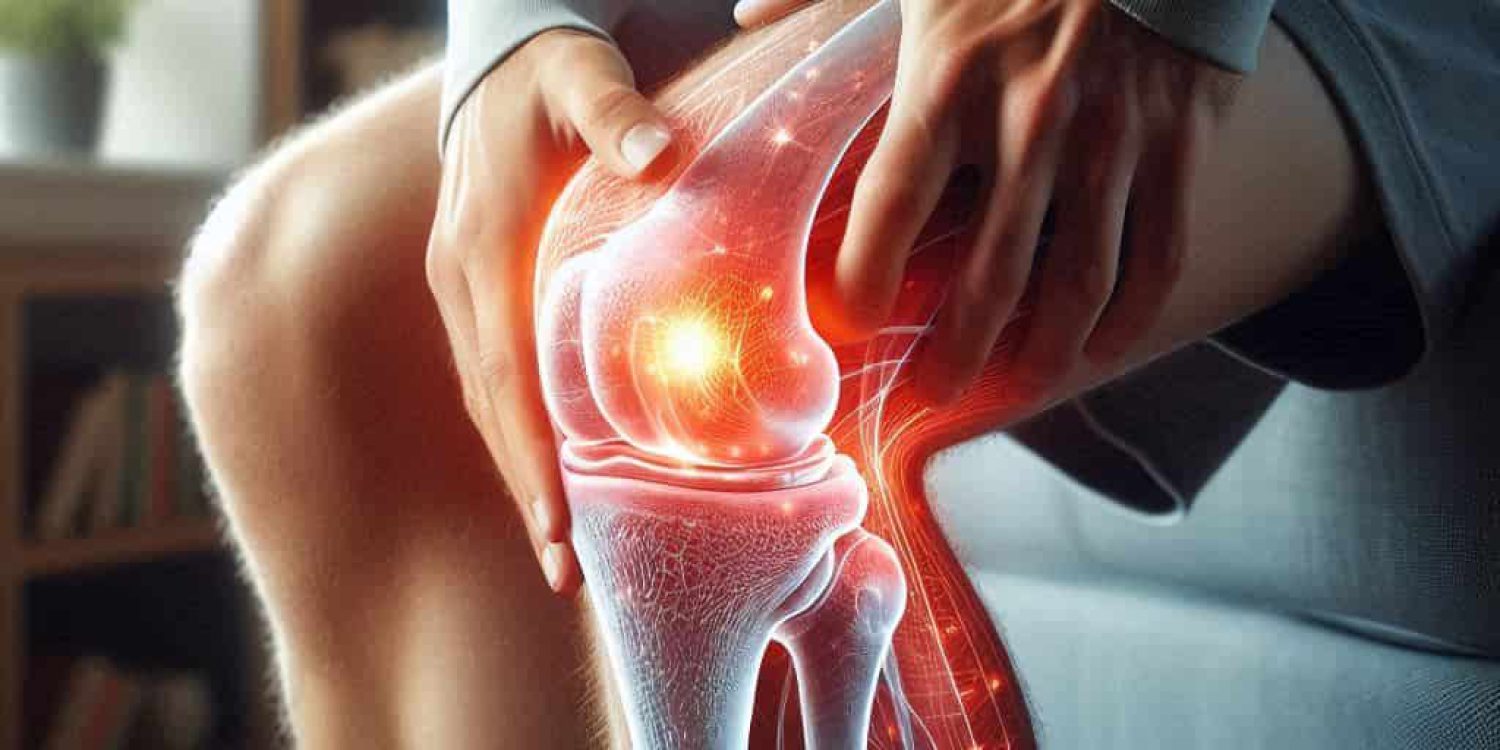Preventing Knee Bursitis: Tips for Long-Term Joint Health
Knee bursitis is a medical condition characterized by the inflammation of small, fluid-filled sacs called bursae, which cushions between bones and soft tissues in the knee joint. These bursae play a crucial role in reducing friction and facilitating smooth movement of the knee. Activities that exert excessive pressure on the knee, such as running, kneeling, or prolonged sitting, can irritate these bursae. When irritated, the bursae can become inflamed, resulting in pain and discomfort that can significantly disrupt daily activities and quality of life. The knee joint's intricate structure and wide range of movements make it particularly vulnerable to bursitis. Key bursae in this region include the prepatellar bursa in front of the kneecap and the infrapatellar bursa positioned just below the kneecap. Understanding the anatomy and functions of these bursae is essential for appreciating the significance of their health and the potential complications that may arise from their inflammation.
Essential Insights on Knee Bursitis
- Housemaid's knee, Clergyman's knee or knee bursitis involves the inflammation of bursae, which are small, fluid-filled sacs cushion the knee joint.
- Common symptoms of knee bursitis include localized pain, swelling, and tenderness around the knee area. It is often diagnosed through a combination of physical examinations and imaging tests.
- Standard treatment approaches for bursitis typically involve rest, ice application, compression techniques, elevation, and over-the-counter pain relief medications.
- Non-surgical treatment options for bursitis may encompass corticosteroid injections, physical therapy sessions, and ultrasound therapy to facilitate recovery.
- Making lifestyle adjustments, such as maintaining an optimal weight, wearing supportive footwear, and avoiding activities that may aggravate the condition, can help manage knee bursitis.
 Recognizing Symptoms and Diagnosing Knee Bursitis
Recognizing Symptoms and Diagnosing Knee Bursitis
Identifying Symptoms Associated with Knee Bursitis
You might notice localized swelling around the knee joint and tenderness and warmth in the affected area. The pain associated with bursitis is often intensified by movement or pressure applied to the knee, making climbing stairs or kneeling particularly uncomfortable. Many individuals report a throbbing pain that may hinder their ability to perform routine tasks. Understanding these symptoms is crucial for early intervention and effective management of the condition. If you suspect knee bursitis, seeking medical advice promptly to prevent further complications is essential.
Understanding the Impact on Daily Activities
In some instances, you may also experience a restricted range of motion in your knee, making it difficult to perform basic everyday tasks. Simple actions such as walking, sitting, or standing can become challenging, affecting your overall quality of life. The discomfort may lead to alterations in your activity levels, potentially resulting in a more sedentary lifestyle, which can have long-term health implications. Recognizing how knee bursitis affects your daily life is essential for motivating you to seek appropriate treatment and make necessary lifestyle adjustments.
Effective Diagnosis and Treatment Pathways
To accurately diagnose knee bursitis, a healthcare professional will typically start with a comprehensive physical examination. They may inquire about your medical history and any recent activities that could have led to the onset of symptoms. Subsequently, imaging tests, such as X-rays or MRI scans, may be requested to eliminate the possibility of other injuries or conditions, such as fractures or ligament damage. You can take proactive steps toward effective treatment and recovery by thoroughly understanding your symptoms and undergoing a detailed diagnostic process.
Exploring Traditional Treatment Strategies for Knee Bursitis
Traditional treatment methods for bursitis primarily aim to reduce inflammation and alleviate pain. One of the most effective approaches is to ensure adequate rest; by allowing your knee to recover from activities that exacerbate the condition, you create an environment conducive to healing. Additionally, applying ice therapy can be particularly beneficial; placing ice packs on the affected area for 15-20 minutes several times a day can significantly reduce swelling and numb pain.
Over-the-counter medications, particularly nonsteroidal anti-inflammatory drugs (NSAIDs), may be recommended to manage pain and inflammation effectively. Healthcare providers may suggest corticosteroid injections directly into the bursa to relieve symptoms in more severe cases. While these traditional treatments can effectively manage symptoms, addressing the underlying causes of bursitis is critical, so exploring complementary therapies may also be advantageous.
 Innovative Non-Surgical Therapies for Effective Knee Bursitis Management
Innovative Non-Surgical Therapies for Effective Knee Bursitis Management
Various non-surgical therapies have gained recognition as effective alternatives for managing knee bursitis in recent years. Among these, shockwave therapy has emerged as a promising treatment option. This innovative technique utilizes high-energy sound waves directed toward the affected area, promoting healing by enhancing blood flow and stimulating cellular repair processes. Patients often find that shockwave therapy alleviates pain and improves overall mobility, allowing for a return to daily activities.
Another non-invasive option is ultrasound therapy, which employs sound waves to penetrate deep into tissues. This treatment can effectively reduce inflammation and encourage healing by increasing circulation in the affected area. Both shockwave and ultrasound therapies are generally well-tolerated. They can be conveniently performed in an outpatient setting, making them appealing options for seeking relief from knee bursitis without surgical intervention.
Implementing Lifestyle Modifications for Better Knee Health
Adopting specific lifestyle changes can profoundly influence your ability to manage prepatellar or infrapatellar bursitis effectively. One of the most significant adjustments involves integrating low-impact exercises into your fitness regimen. Swimming or cycling can help maintain cardiovascular fitness without placing excessive strain on your knees. Also, managing your weight is crucial; excess body weight stresses your joints, potentially worsening bursitis symptoms.
Being mindful of your posture and body mechanics during daily activities is also essential. Employing proper techniques while lifting heavy objects or participating in sports can significantly reduce undue knee stress. Furthermore, incorporating stretching and strengthening exercises into your routine can enhance flexibility and bolster the muscles surrounding your knee joint. By implementing these lifestyle modifications, you can create a more supportive environment for your knees and diminish the likelihood of future flare-ups.
The Role of Physical Therapy in Rehabilitation for Knee Bursitis
Physical therapy is a critical component of the rehabilitation process for individuals dealing with knee bursitis. A licensed physical therapist will collaborate with you to design a personalized treatment plan that addresses your specific needs and rehabilitation goals. This comprehensive plan may incorporate exercises focused on strengthening the muscles around your knee, improving flexibility, and enhancing overall functional capabilities.
By participating in targeted exercises, you can effectively alleviate pain and restore mobility in your knee joint. In addition to strengthening exercises, your physical therapist may integrate modalities such as ultrasound or electrical stimulation during treatment sessions, which can further aid in reducing inflammation and accelerating the healing process. Regular sessions with a physical therapist offer valuable guidance and provide the accountability necessary for a successful recovery journey.
 Exploring Alternative Therapies for Enhanced Knee Bursitis Management
Exploring Alternative Therapies for Enhanced Knee Bursitis Management
In addition to standard treatments, many individuals explore alternative therapies to complement their management of bursitis. Acupuncture has gained traction as a practical option, known for its potential to relieve pain and promote healing through targeted stimulation of specific points in the body. Many patients report that acupuncture helps reduce inflammation and enhances their overall well-being.
Massage therapy is another alternative worth considering. Therapeutic massage can alleviate muscle tension surrounding the knee joint, promoting relaxation and improving circulation. Massage therapy may reduce pain associated with bursitis by addressing tightness in adjacent muscles. Exploring these alternative therapies can provide additional strategies to manage your condition effectively and enhance your quality of life.
Strategies for Preventing the Recurrence of Knee Bursitis
A proactive approach involving various strategies is essential to prevent the recurrence of knee bursitis. First, it's vital to listen to your body and recognise when it's time to take a break. If you notice signs of discomfort or swelling following physical activity, allow your knees the necessary time to recover. Gradually increasing the intensity of your workouts can also help avert overuse injuries, ensuring that your body can adapt effectively.
Incorporating strength training exercises into your routine further supports knee health by building muscle around the joint. Strong muscles provide stability and significantly lower the risk of injury during physical activities. Additionally, investing in supportive footwear that offers adequate cushioning and arch support during exercise or daily activities is beneficial. Implementing these preventive measures can considerably reduce the likelihood of experiencing knee bursitis again.
To deepen your understanding of prepatellar or infrapatellar bursitis and explore various treatment options, seeking reliable resources is essential. Researching therapies that can alleviate pain and enhance mobility is crucial for effective management. Although I don't have a direct article to reference, you can find relevant information, consultations, and therapeutic products by visiting MCR Therapies. This platform offers a diverse range of therapeutic solutions tailored to assist in managing the symptoms of knee bursitis.
Frequently Asked Questions About Knee Bursitis
What exactly is knee bursitis?
Prepatellar or infrapatellar bursitis is an inflammatory condition in which the bursae, the small fluid-filled sacs that cushion the outside of the knee joint, become inflamed. This inflammation can result in pain, swelling, and restricted movement within the knee.
What are the common causes contributing to bursitis?
Knee bursitis can arise from various factors, including overuse, trauma, infections, or underlying conditions such as arthritis. Activities that impose repetitive pressure on the knee, such as kneeling or running, are common contributors to the development of this condition.
What symptoms should I expect if I have knee bursitis?
Symptoms of prepatellar or infrapatellar bursitis typically manifest as pain, swelling, warmth, and tenderness surrounding the knee joint. Additionally, individuals may experience limited movement and discomfort when bending or straightening the knee.
How do healthcare professionals diagnose knee bursitis?
A healthcare professional typically diagnoses knee bursitis by combining a physical examination, a review of your medical history, and potentially imaging tests such as X-rays or MRI scans to rule out other possible causes of knee pain.
What treatment options are available for knee bursitis?
Treatment options for knee bursitis may encompass rest, ice therapy, compression techniques, elevation (commonly referred to as RICE), the use of nonsteroidal anti-inflammatory drugs (NSAIDs), physical therapy, and, in some instances, aspiration of bursa fluid or corticosteroid injections. In severe cases, surgical intervention may be necessary.
What is the typical recovery timeline for knee bursitis?
Recovery duration for knee bursitis varies depending on the severity of the condition and how well an individual responds to treatment. With appropriate rest and care, many people can expect to recover from knee bursitis within a few weeks to a few months.


























41 Comments
This post on preventing knee bursitis really resonates with me. I’ve experienced my own share of joint discomfort over the years, particularly from activities like long-distance running and gardening, which often involves a lot of kneeling. It’s fascinating how much we take for granted in our daily movements until something like bursitis makes us realize just how vital those little bursae are.
Your exploration of knee bursitis highlights the often-overlooked complexities of our joint health. I can relate to this topic personally, as I have experienced knee discomfort after prolonged periods of kneeling while working on home improvement projects. It’s fascinating to consider how our daily activities, whether it be for work or leisure, can inadvertently contribute to such conditions.
It’s great to hear that the topic struck a chord with you. Knee discomfort from activities like kneeling is a real challenge many folks can relate to, especially when we’re caught up in projects that demand our full attention. It’s interesting to see how the little things we do every day can sneak up on us in ways that we may not expect.
“I’m glad you found the article relatable! If you’re interested in learning more about preventive measures and treatments for knee bursitis, check out this useful resource.”
https://mcrtherapies.co.uk/ezi
This post really highlights how often we overlook the complexities of our joints until they remind us of their presence through pain. It’s fascinating how something as small as a bursa can significantly affect our mobility and overall quality of life. I’ve personally experienced the challenges of knee issues, which made me realize the importance of preventive care, like regular stretching and low-impact activities such as swimming or cycling.
You raise an important point about the need for awareness regarding knee bursitis and its underlying mechanisms. Having dealt with occasional knee discomfort myself, I’ve come to appreciate how easily one can overlook the significance of seemingly minor lifestyle choices—like long periods of sitting or improper posture during exercise—that can exacerbate issues like bursitis.
Well, knee bursitis sounds about as delightful as stepping on a Lego in the middle of the night, doesn’t it? I mean, who knew those little fluid-filled sacs were such prima donnas? They’re just trying to do their job—cushioning our knees and all—but the moment we give them a little too much of a workout, they throw a diva fit. I can’t help but chuckle about how these tiny little guys can season our lives with such discomfort when they decide they’ve had enough.
It’s true—knee bursitis really does seem to have a flair for the dramatic. You’d think those little bursae would be more chill about doing their job. I mean, they’re supposed to be the unsung heroes of our joints, right? But as soon as they start feeling overworked or irritated, they turn the situation into a real pain. It’s fascinating how something so small can have such a big impact on our daily lives.
Your exploration of knee bursitis truly sheds light on a condition that can often be overlooked until it becomes a significant issue. As someone who enjoys running, I’ve experienced the subtle warning signs of joint discomfort that, unfortunately, can escalate if not addressed early. It’s fascinating how our understanding of such injuries has evolved, especially with advancements in technology and biomechanics.
Your exploration of knee bursitis and its impact on joint health raises many important points, especially regarding the everyday activities that can lead to such discomfort. I’ve personally encountered knee issues stemming from a misjudged insistence on maintaining a rigorous exercise routine, particularly through running and cycling, which I thought were beneficial. However, I soon discovered the necessity of listening to my body and understanding how certain movements could exacerbate joint problems.
Your exploration of knee bursitis serves as a poignant reminder of how interconnected our bodily structures are and how seemingly minor irritations can lead to significant disruptions in our daily lives. As someone who has experienced knee discomfort after running occasionally, I found your insights particularly relatable.
Your experience really highlights a truth many of us overlook: our bodies are like complex machines where every little part plays a role in our overall function. When one component starts to falter—be it from overuse during a run, a sudden twist, or even just aging—it can disrupt not only that specific area but also how we move and feel day to day. It’s fascinating yet frustrating how a small irritation like bursitis can ripple outward, transforming something as simple as a morning jog into a reminder of our physical limits.
Thank you for your thoughtful comment! If you’re looking for more tips on managing knee discomfort and maintaining your active lifestyle, I invite you to check out this resource.
https://mcrtherapies.co.uk/ezi
It’s interesting to see how knee bursitis affects so many people, especially those who are active in sports or occupations that require kneeling. I’ve experienced something similar during my own running routine. I found that incorporating strength training to support the muscles around the knee helped alleviate some discomfort. It highlights the interconnectedness of joint health and overall body conditioning.
It’s definitely a common issue for those of us who love being active, isn’t it? Knee bursitis can really put a damper on a running routine or any activity that involves a lot of knee movement. I relate to your experience; I’ve dealt with similar discomfort, and it’s frustrating to have to adjust your routine.
This post really hits home for me. I used to be an avid runner, but after struggling with knee bursitis, I had to rethink my approach to exercise. It’s interesting how our bodies can change and require us to adapt our activities. Since then, I’ve been exploring low-impact options like swimming and cycling, which have been gentler on my knees.
Your blog provides valuable insights into the often-overlooked issue of knee bursitis, especially since many may not realize how common this condition is until it affects them personally. I’ve dealt with similar issues after years of running and occasionally neglecting proper recovery techniques; it’s surprising how quickly something as simple as overuse can lead to discomfort.
I really appreciated the insights shared on knee bursitis and the importance of understanding the bursae in our knee joint. It’s fascinating how something as small as a bursa can have such a big impact on our overall mobility and daily life. I’ve had my own struggles with knee discomfort after years of playing recreational soccer and occasionally kneeling during home improvement projects. It never crossed my mind that the pain I sometimes felt could be related to the inflammation of these bursae.
This topic on knee bursitis resonates with me, especially as I’ve dealt with similar issues after years of running and occasional kneeling work. It’s fascinating how often we overlook the importance of bursae in our joints until pain forces us to pay attention. In my experience, incorporating flexibility and strength training into my routine has made a significant difference.
It’s interesting how our bodies remind us of their parts we often ignore, isn’t it? Bursae play such a crucial role, yet we usually only think about them when something goes wrong. Your experience working running and kneeling makes so much sense; both activities can really put some strain on those areas.
“I’m glad to hear that you’ve found flexibility and strength training helpful! If you’re interested, check out this resource that dives deeper into managing knee bursitis and enhancing joint health.”
https://mcrtherapies.co.uk/ig
This post really hits home for me. I’ve had my share of knee issues over the years, and it’s interesting how many people underestimate the importance of those little bursae until they start causing problems. I remember training for a marathon a while back, and I pushed myself way too hard. All that running combined with some poor footwear really messed up my knees, leading to bursitis flare-ups that grounded me for weeks. It’s a rude awakening to realize just how much impact those small sacs can have on our overall mobility.
It’s interesting to see how often knee bursitis is overlooked until it affects our daily lives. I’ve personally experienced the challenge of persistent knee pain after many years of running. It became clear to me how crucial those bursae are for smooth movement. After consulting a physical therapist, I learned some valuable preventative exercises that not only helped alleviate my symptoms but also strengthened the surrounding muscles.
It’s fascinating how something as seemingly small as the bursae can have such a significant impact on our knee health. I’ve recently started incorporating more low-impact exercises into my routine to help myself avoid knee issues, particularly since I enjoy running and can definitely feel the strain if I’m not careful. Simple practices like maintaining flexibility and strength in my leg muscles have made a huge difference.
It’s great to hear about your journey with low-impact exercises! It’s true that those little bursae play a pretty critical role in keeping things running smoothly, literally. It sounds like you’ve taken some smart steps to protect your knees, especially with how intense running can be on the joints.
It’s interesting to hear about your experience with low-impact exercises and how you’re paying attention to the little things, like the bursae. They really do play a crucial role in our knee health, acting as cushions that help reduce friction between bones and tissues during movement. When you’re hitting the pavement regularly, they can end up bearing more load than we realize.
I’m glad to hear you’re prioritizing your knee health! If you’re interested, I have some great resources on low-impact exercises and strengthening routines that could further enhance your efforts—check them out!
https://mcrtherapies.co.uk/ezi
Your exploration of knee bursitis highlights a topic that many may overlook until it directly impacts their lives. The intricate relationship between our joints and our daily activities is something often taken for granted. From personal experience, I’ve come to realize just how essential joint health is—not only for athletes but for anyone engaging in daily tasks that may strain the knees, like gardening or prolonged office work.
You’re raising an important point about the often overlooked connection between joint health and our everyday activities. Many people don’t consider just how much they rely on their joints until they start to feel discomfort. Knee bursitis is a perfect example of this, as it can creep up on anyone, not just athletes. I’ve encountered individuals who develop bursitis from repetitive actions like kneeling for gardening or even maintaining a sedentary position at a desk for too long.
“You’re absolutely right; joint health is crucial for everyone! If you’re looking for ways to support your knee health and enhance your daily activities, check out this insightful resource.”
https://mcrtherapies.co.uk/fb
It’s true that joint health often gets pushed to the background until something like knee bursitis reminds us how crucial it really is. I can relate to that realization; after spending long hours hunched over a desk, I’ve felt the strain on my knees too. It’s interesting how our bodies can adapt to certain strains for so long, until they just can’t anymore.
Reading your post on preventing knee bursitis truly resonates with me, especially as someone who has navigated the challenges of maintaining joint health through an active lifestyle. The details you provided about the anatomy of the knee and the crucial role of the bursae shed light on an often-overlooked aspect of joint care. It’s fascinating how these small fluid-filled sacs, while seemingly minor, can have such a profound impact on our daily activities and overall well-being.
It’s great to hear that the post struck a chord with you. Joint health can be a bit of a puzzle, especially when we’re trying to stay active and keep up with everything life throws at us. Your experience highlights the intricate balance we need to maintain when we’re pushing our bodies, and the role bursae play can often get lost in the mix.
This post provides a fantastic overview of an often-overlooked aspect of knee health! The role of bursae in the knee cannot be understated, especially for those of us who lead active lifestyles. As someone who enjoys hiking and running, I’ve occasionally felt that nagging sensation around my knees, which always leaves me wondering if I might be heading towards bursitis territory.
This post really hits home for me! I’ve been dealing with knee issues for a while now, and I had no idea how important those little bursae were until I started researching my symptoms. I think a lot of people overlook the complexity of the knee joint and how just a small change can lead to significant discomfort. It’s fascinating—these tiny fluid-filled sacs play such a crucial role in our everyday movements, yet we only tend to think about them when something goes awry.
It’s great to hear how the post resonated with you. Knee issues can really be a game changer in day-to-day life, and it sounds like you’re diving deep into understanding what’s going on. You’re spot on about those little bursae; they really are the unsung heroes in our joints. It’s wild to think about how something so small can have such a big impact on comfort and movement.
Your insights about knee bursitis really resonate with me, especially the emphasis on understanding the anatomy of the bursae. I’ve experienced my share of knee discomfort from years of running, and it was enlightening to learn how crucial those small fluid-filled sacs are for our joint health. I’ve found that incorporating low-impact activities, like swimming or cycling, has significantly reduced my knee pain. It’s also interesting how our lifestyle choices can either exacerbate or alleviate these issues. Would love to hear if anyone else has tried specific exercises or strategies that have helped with preventing bursitis or promoting joint health!
Your exploration of knee bursitis highlights a crucial aspect of joint health that many tend to overlook. Having dealt with persistent knee pain myself, I’ve found that understanding the anatomy of the knee—like the roles of the prepatellar and infrapatellar bursae—has been instrumental in addressing my own issues.
It’s interesting to see how the structure of our knees plays such a critical role in our overall mobility and quality of life. I’ve experienced my fair share of joint issues, and it really highlights the importance of preventive care. I’ve found that incorporating low-impact activities like swimming or cycling can help maintain joint health without putting too much pressure on the bursae. It also makes me think about the broader implications of joint health, particularly as we age. Conditions like knee bursitis can severely impact not just physical well-being but also mental health, as limited mobility can lead to isolation and decreased activity levels. Has anyone else explored different techniques or exercises that have helped them manage or prevent bursitis?
This is such an important topic! I’ve dealt with knee issues myself, so I can definitely relate to the frustration that comes with bursitis. It’s wild how something as small as a bursa can have such a significant impact on mobility and overall quality of life.
It’s interesting to see how often we overlook the impact of small structures like bursae on our overall joint health. I’ve had my own struggles with knee pain, and learning about conditions like bursitis really opened my eyes to the importance of preventive measures. It’s surprising how common activities like gardening or even just sitting for too long can contribute to knee issues.
This is such an important topic! I had a bout of knee bursitis a couple of years ago while training for a marathon, and I can definitely relate to how frustrating it is. It really brought the discomfort of everyday activities to the forefront of my mind—simple things like climbing stairs or sitting for too long became quite a hassle.
It sounds like you went through quite a challenge with your knee bursitis, especially while training for something as demanding as a marathon. It’s interesting how something that seems so minor can really shift your perspective on daily routines, isn’t it? Climbing stairs or sitting for an extended period suddenly becomes an exercise in patience.
It’s fascinating how something as small as a bursa can have such a big impact on joint health and mobility. I’ve dealt with knee pain myself after getting into longer runs, and it’s incredible how easily one can take joint health for granted until there’s a problem. Your tips on avoiding excessive pressure on the knees resonate a lot. I found incorporating strength training and flexibility exercises really helpful in my own routine to support knee health. It’s interesting to think about how our lifestyles—like spending long hours sitting or engaging in high-impact activities—affect our joints over time. Has anyone here tried specific exercises or therapies that have made a significant difference for them?
Your insights into knee bursitis shed light on an often-overlooked issue that affects so many of us, whether we lead active lifestyles or have jobs requiring prolonged sitting or kneeling. Personally, I never paid much attention to knee health until I experienced a bout of bursitis after an intense hiking trip. It was a stark reminder of how crucial those small bursae are for our mobility and comfort.
It’s interesting how something as small as a bursa can have such a significant impact on our daily lives, isn’t it? Your experience after that intense hiking trip really highlights how easily we can take our bodies for granted until something like bursitis brings us to a halt. I think it’s a wake-up call for many of us to pay more attention to our joint health and overall wellness.